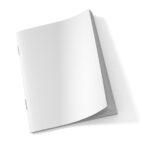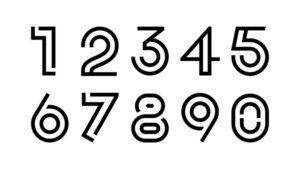Written by Haley Boyce

The University of Chicago was founded in 1890, with the university’s own press opening a year later. From the start, staff at the University of Chicago press knew there needed to be an agreed upon standard to maintain consistency and professionalism in print media. Thus, The Chicago Manual of Style was born.
First published in 1906, The Chicago Manual of Style was among the first style guides to be published as a book. While other style guides (AP, MLA, and APA) have traditionally been published by professional companies, The Chicago Manual of Style can boast that it is the only writing style guide to be published by a university press.
Now in its 17th edition – with the most recent edition published in 2017 – the style guide can be found both in print and online.
Like any other style guide, there are unique rules that make the writing style what it is, but Chicago style lends itself to flexibility where other styles do not.
Let’s get down to the brass tacks of Chicago style.
Turabian Style – How a U of Chicago Secretary Helped Make the Guide a Go-to Standard in the Writing World
 Remember this: The secretary is the one who really runs the show.
Remember this: The secretary is the one who really runs the show.
In 1925, Chicago-born Kate Turabian was hired as a department secretary at the University of Chicago. Within five years, Turabian could be found working in the newly created position called the dissertation secretary.
It is in this role that Turabian worked as a sort of gatekeeper for every single dissertation submitted to the school. Thus, the groundwork was laid for Turabian to rock the world of academia with a slim pamphlet that she wrote to help graduate students format their papers to meet the standards of Chicago style.
This pamphlet would soon take on a life of its own, evolving into a book known as A Manual for Writers of Research Papers, Theses, and Dissertations. The goal being to help students fully comprehend the precision of Chicago style.
This publication is described by many as an introduction to The Chicago Manual of Style. Should you open a copy of A Manual for Writers, you would find a focus on source citation, style, and paper format as called for in The Chicago Manual of Style.
Today, the book is known by its shorter title, A Manual for Writers and has sold more than nine million copies and is in its ninth edition. Turabian went on to also publish The Student’s Guide for Writing College Papers. Not bad for a girl from the south side!
What are the Chicago Manual of Style Formatting Rules?
A history lesson about Chicago style’s origins is cool and all, but there’s a reason that brought you here that probably has everything to do with questions like:
- “How wide should the margin be?”
- “Does the period go inside or outside of the quotation mark?”
- “Does it really matter if I put a comma there?”
Here’s what you need to know:
Page Layout

- One inch margins on both sides and top and bottom of the page.
- Font should be 12-point in Times or Times New Roman.
- Double space the entire text.
- Alignment should be left-justified.
- Use a ½ inch indent at the beginning of every paragraph, block quotes, and hanging indents (hitting the tab button once will do the trick).
- Number the pages in the upper right corner of each page with page number one being the page where your essay begins (the cover page should not be numbered).
-
-
-
- In academia especially, include your last name before the page number just in case they somehow become misplaced or out of order and the professor or publisher (or whoever else is reading your paper) needs to put it back in order.
-
-
Assemble your paper as such:
- Cover page
- Body of the paper (your essay, etc.)
- Appendix, if your instructor has indicated on is necessary
- Notes
- Bibliography
Cover Page

- Center your title in the middle of the page, half way down.
- Type your name directly beneath your title (still centered).
- If your paper is for a class, include the following information at the bottom of the page. Each item should be on its own line, as such:
Instructor’s name
Course title and section
Date the paper is due
- Font should be the same as the rest of your paper: 12 point font in Times or Times New Roman.
- Do not number your cover page, and do not count it toward your total page count.
Names and Numbers

- The first time you mention the name of a person or agency, use their full name. Every time after that, refer to the agency by their initials or last name only.
-
-
-
- First mention: Federal Bureau of Investigation
- Second Mention: FBI
- First mention: Taylor Swift
- Second mention: Swift
-
-
- Spell out numbers less than 100. (Big difference from AP style, which spells out numbers one through nine!)
Endnotes and Footnotes

- Whereas a header is the top of the page, footnotes go at the bottom (think of essays like a human figure with a header at the top, the middle section is the body of the essay, and your footnotes go at the bottom).
- Embed the note number at the end of the sentence where the reference occurs.
- The note number goes after all other punctuation.
- Use Arabic figures (1, 2, 3).
- Use Times/Times New Roman 10 pt font.
- Single space each entry; double space between entries.
- Indent the first line of each note.
- You may use a reference multiple times, just be sure to create one note for each time you use it.
Bibliography

- Type the word Bibliography centered at the top of the page in Times or Times New Roman 12-point font. Keep the heading font the same as the rest of the bibliography.
- Use a "hanging indent". This means that the first line of the citation begins at the margin and if the information goes onto a second line, then that second line should be indented.
- If your source has no author, alphabetize by title.
- Only separate primary and secondary sources if your instructor calls for it.



